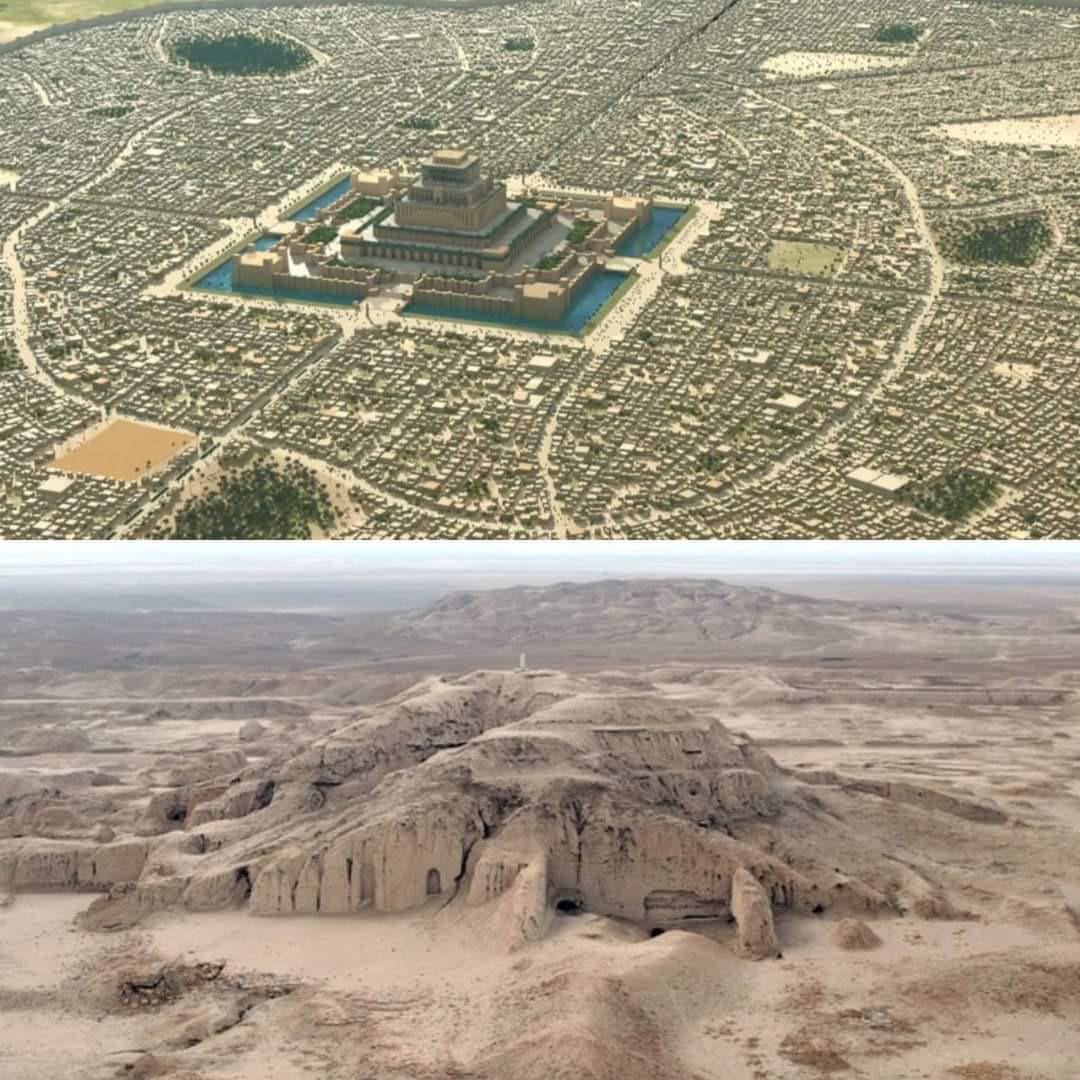It is difficult to imagine that a city as grand and flourishing as Uruk, which played a crucial role in the dawn of human civilization, was built over 6,000 years ago. Located in the southern region of modern-day Iraq, Uruk was the heart of the Sumerian civilization and is widely regarded as the first true urban center in human history. Its contributions to culture, politics, and technology laid the foundation for the development of complex societies and shaped much of human history.
Discovery of Uruk: A Window into the Ancient World
The story of Uruk’s rediscovery began in 1849 AD when British archaeologist William Loftus first brought the ancient city to light. His excavation revealed the remains of a city that had been buried for millennia, forgotten by the modern world. Loftus’s discovery sparked a series of archaeological efforts that would eventually uncover the extraordinary achievements of the Sumerians.

Uruk’s location on the banks of the Euphrates River played a vital role in its development, providing the city with access to crucial resources and facilitating trade. The river’s proximity also allowed Uruk to become a significant cultural and economic hub, attracting merchants, artisans, and scholars from across the region. As a result, Uruk became a center of influence, contributing to the spread of cultural and technological advancements throughout Mesopotamia and beyond.
Foundations of Urban Life: Architecture and Innovation
Uruk’s rise to prominence between 6500 and 4000 BCE marked the culmination of early human efforts to build organized, permanent settlements. The city was a pioneer in urban planning, with a carefully designed layout that included residential, commercial, and religious districts. Its walls, temples, and monumental structures set it apart from earlier settlements and were a testament to the city’s architectural prowess.

The most iconic structure in Uruk was the ziggurat, a large stepped pyramid-like structure used for religious and administrative purposes. These ziggurats became a hallmark of Sumerian architecture and played a significant role in the development of religious and political institutions. Uruk’s Eanna temple complex, dedicated to the goddess Inanna (later known as Ishtar), was one of the most impressive landmarks of the city, demonstrating both religious devotion and architectural sophistication.
Uruk’s urban design and monumental architecture were revolutionary for the time. The city’s layout and infrastructure served as a model for future urban centers, influencing city planning for centuries to come.
Cultural and Scientific Achievements
Uruk is most famously known as the birthplace of writing. Around 3200 BCE, the Sumerians developed the cuneiform script, one of the earliest systems of writing. Initially used for recording trade transactions and managing resources, cuneiform eventually became a tool for documenting laws, religious texts, and historical events. The discovery of thousands of clay tablets inscribed with cuneiform in Uruk reveals the city’s central role in the development of written communication, which had a profound impact on future civilizations.

In addition to writing, Uruk was a center of technological and artistic innovation. The city was renowned for its advancements in pottery, metallurgy, and textiles. Uruk’s pottery was intricate and often used in trade, while its cylinder seals—engraved stones used to mark goods—became an essential part of administrative and legal systems. These innovations were not only practical but also artistic, demonstrating the creativity and skill of the Uruk people.
Uruk’s Political and Social Influence
Uruk’s significance extended far beyond its cultural and technological achievements. The city played a crucial role in the formation of early political structures, including the development of centralized administration, taxation, and laws. The Sumerians established complex bureaucratic systems to manage the city’s growing population and resources, which contributed to the rise of state institutions and governance.

One of Uruk’s most famous figures is Gilgamesh, the semi-divine king of the city, who is immortalized in the Epic of Gilgamesh. This ancient epic provides valuable insights into the values, beliefs, and worldview of the Uruk people, including their views on death, the divine, and the nature of leadership. As the central figure in the epic, Gilgamesh’s story exemplifies the cultural and political influence of Uruk at its height.
Decline and Legacy
At its peak around 3000 BCE, Uruk was one of the largest cities in the world, with a population that may have exceeded 50,000 people. However, like many ancient cities, Uruk eventually declined due to a combination of factors, including shifts in the course of the Euphrates River, political changes, and invasions by neighboring peoples. Over time, the city was abandoned, but its influence on the ancient world remained.

Despite its decline, Uruk’s legacy endures. The city’s contributions to writing, architecture, and governance have had a lasting impact on human civilization. Today, the ruins of Uruk continue to captivate archaeologists, historians, and visitors, offering a glimpse into the early stages of urbanization and the development of complex societies.
Uruk’s influence can still be seen in modern society. The urban planning techniques developed in Uruk, along with the creation of writing and centralized administration, laid the groundwork for modern cities and governance. The legacy of Uruk serves as a reminder of the ingenuity and vision of the ancient Sumerians, whose innovations continue to shape the world today.
Conclusion: The Enduring Legacy of Uruk
Uruk stands as a testament to the ingenuity and creativity that marked the beginnings of human civilization. Its role as the first urban center, its pioneering advancements in writing and architecture, and its contributions to the political and cultural landscape of Mesopotamia make it one of the most significant archaeological sites in the world. The city’s legacy continues to resonate today, influencing modern urban design, governance, and written communication. As one of the earliest and most influential civilizations, Uruk remains a key chapter in the story of human history and its ongoing evolution.

